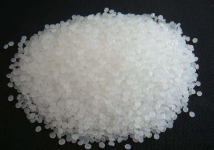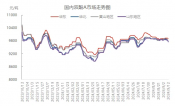read: 1307 time:2025-07-03 16:00:52 from:化易天下
Acetylation is a fundamental chemical process widely used in organic synthesis, particularly in the pharmaceutical and chemical industries. One question that often arises is, "Why is pyridine used in acetylation?" This article explores the specific reasons behind the use of pyridine in acetylation reactions, highlighting its role, benefits, and the underlying chemistry that makes it an ideal choice for this process.
Pyridine is primarily used in acetylation because of its ability to act as a catalytic base. During the acetylation reaction, an acylating agent, such as acetic anhydride, reacts with a nucleophile, like an alcohol or amine, to form an ester or amide. Pyridine’s nitrogen atom has a lone pair of electrons, which makes it a mild base capable of deprotonating the nucleophile. This deprotonation increases the nucleophile’s reactivity, facilitating the formation of the acetylated product.
For instance, in the acetylation of an alcohol, pyridine abstracts a proton from the hydroxyl group, generating an alkoxide ion. This ion is more nucleophilic and readily reacts with the acylating agent, speeding up the overall reaction. This is one of the primary reasons why pyridine is used in acetylation reactions.
In addition to its role as a base, pyridine also serves as a solvent and acid scavenger in acetylation reactions. When acylating agents like acetic anhydride are used, the by-products often include acids (such as acetic acid). These acids can interfere with the reaction by protonating the nucleophile or by leading to side reactions.
Pyridine effectively neutralizes these acidic by-products due to its basic nature. By forming pyridinium salts with the acids, it removes them from the reaction environment, thus maintaining the basic conditions necessary for the reaction to proceed efficiently. The dual role of pyridine as a base and an acid scavenger ensures that the acetylation reaction remains uncontaminated and proceeds with high yield.
Another reason why pyridine is used in acetylation is its compatibility with a wide range of substrates. Pyridine is a relatively mild base, meaning it does not react aggressively with sensitive functional groups in the reactants. This property is particularly beneficial in the acetylation of complex molecules where multiple functional groups are present.
For example, in the acetylation of compounds containing both alcohol and amine groups, pyridine can selectively activate the desired functional group without affecting others. This selectivity helps chemists achieve the desired acetylated product without unwanted side reactions, which is crucial in the synthesis of pharmaceuticals and fine chemicals.
When considering why pyridine is used in acetylation over other bases, it is essential to compare its advantages. Stronger bases like sodium hydroxide or potassium carbonate could also be used to deprotonate the nucleophile, but they often lead to over-reaction or unwanted side reactions due to their high reactivity. Pyridine, with its moderate basicity, provides just the right balance, making it an ideal choice for acetylation reactions, especially in sensitive or multi-step syntheses.
Moreover, pyridine’s liquid state at room temperature and its miscibility with common organic solvents make it easier to handle and remove after the reaction, further enhancing its utility in acetylation processes.
In summary, the reasons why pyridine is used in acetylation are manifold. Its role as a catalytic base enhances the reactivity of nucleophiles, its ability to scavenge acids prevents side reactions, and its compatibility with various substrates allows for selective acetylation in complex molecules. These properties make pyridine an indispensable reagent in acetylation reactions, particularly in the synthesis of pharmaceuticals and fine chemicals. Whether you’re optimizing a laboratory-scale reaction or scaling up for industrial production, pyridine’s unique characteristics ensure that acetylation proceeds smoothly and efficiently.

Jincheng Petrochemical's 300000 ton polypropylene plant successfully trial production, 2024 polypropylene market analysis

The ABS market remains sluggish, what is the future direction?

Market differentiation of bisphenol A intensifies: prices rise in East China, while prices generally decline in other regions

The production method and process flow of silicone acrylic lotion, and what are the common raw materials